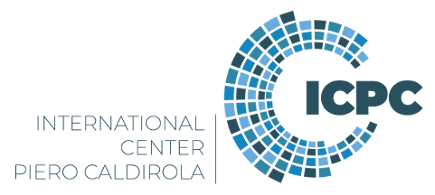Speaker
Description
J. Flanagan, S. Abouelazayem, O. Asunta, H. Bohlin, P. F. Buxton, T. Brewer, C. Colgan, A. Dnestrovskii, M. Fontana, M Gemmell, J Hakosalo, F. Janky, M. Iliasova, D. Kos, H.F. Lowe, M.P. Gryaznevich, L. Martinelli, S.A.M. McNamara, G. Naylor, M. Romanelli, V. Nemytov, A Prokopyszyn, M. Sertoli, J. Sinha, S Sridhar, J. Varje, H.V. Willett, P. Thomas, Y. Takase, A. Rengle, T. O'Gorman, B. Vincent(1), J. Wood and the ST40 team.
Tokamak Energy Ltd., 173 Brook Drive, Milton Park, Oxfordshire, OX14 4SD, United Kingdom
(1) ICTEAM, UCLouvain, Louvain-la-Neuve, Belgium
Tokamak Energy (TE) is advancing diagnostic technologies to support its mission of delivering commercial fusion energy through compact spherical tokamaks, guided by strong public-private partnerships. This presentation will outline recent and ongoing diagnostics development across several programmes, with a focus on ST40—the highest field spherical tokamak in the world.
ST40, which has demonstrated ion temperatures above 100 million degrees Kelvin [1], is currently running a campaign to evaluate confinement scaling at higher fields and maximise the fusion triple product. Lithium granule injection is also being trialled to assess its impact on performance and impurity control. The campaign is supported by a suite of advanced diagnostics, including Thomson Scattering, sub-mm interferometry, soft X-ray and bolometer cameras, neutron cameras, spectrometers and diamond detectors, Langmuir probes, visible-UV and X-ray spectrometry, and infrared imaging [2].
The next phase of ST40 is defined by the LEAPS programme – a $52 million collaboration with the US Department of Energy (DOE) and the UK Department for Energy Security and Net Zero (DESNZ). This upgrade will involve a lithium evaporative coating of the wall combined with the lithium granule injection, building on foundational work by the Princeton Plasma Physics Laboratory (PPPL) and the Oak Ridge National Laboratory (ORNL), and will position ST40 as a key testbed for addressing plasma-wall interaction challenges in future fusion devices. To optimise measurement capabilities, the ST40 diagnostic suite will be further upgraded and enhanced with the addition of several new diagnostics.
In parallel, TE is contributing to the U.S. DOE Milestone-Based Fusion Development Program. The Milestones include a pre-conceptual design of a pilot plant, with a minimum viable diagnostic set, and a technology development roadmap addressing long-pulse operation, environmental resilience, and supply chain readiness.
TE additionally plays a key role in accelerating innovation in diagnostics for future fusion devices and fusion supply chain development through in-house research and development activities, and by supporting large scale initiatives: experts from TE are technical advisors to 13 organisations developing sensors for extreme fusion conditions as part of UKAEA’s Fusion Industry Programme.
These developments are central to TE’s mission of enabling high-performance, reactor-relevant plasma operation in compact devices. They support current experimental goals and lay the foundation for scalable diagnostics in future pilot plants and commercial fusion systems.
References
[1] S.A.M. McNamara et al ‘Achievement of ion temperatures in excess of 100 million degrees Kelvin in the compact high-field spherical tokamak ST40’ 2023 Nucl. Fusion 63 054002
[2] S.A.M. McNamara et al ‘Overview of recent results from the ST40 compact high-field spherical tokamak’ 2024 Nucl. Fusion 64 112020

